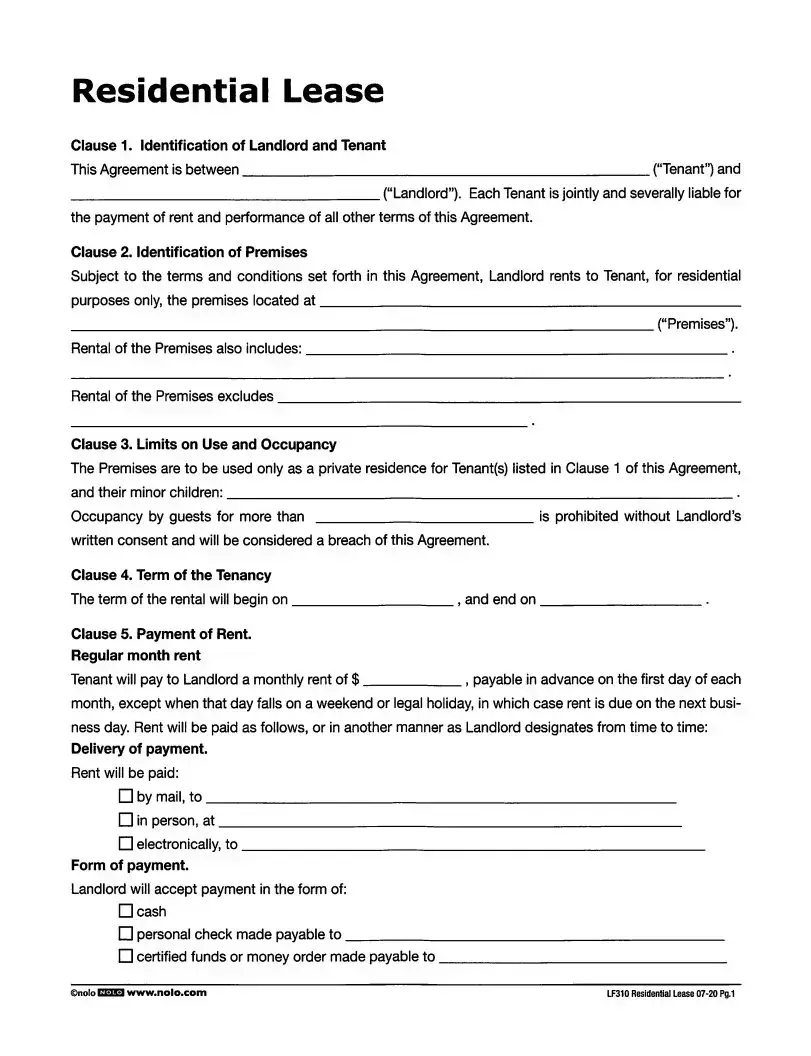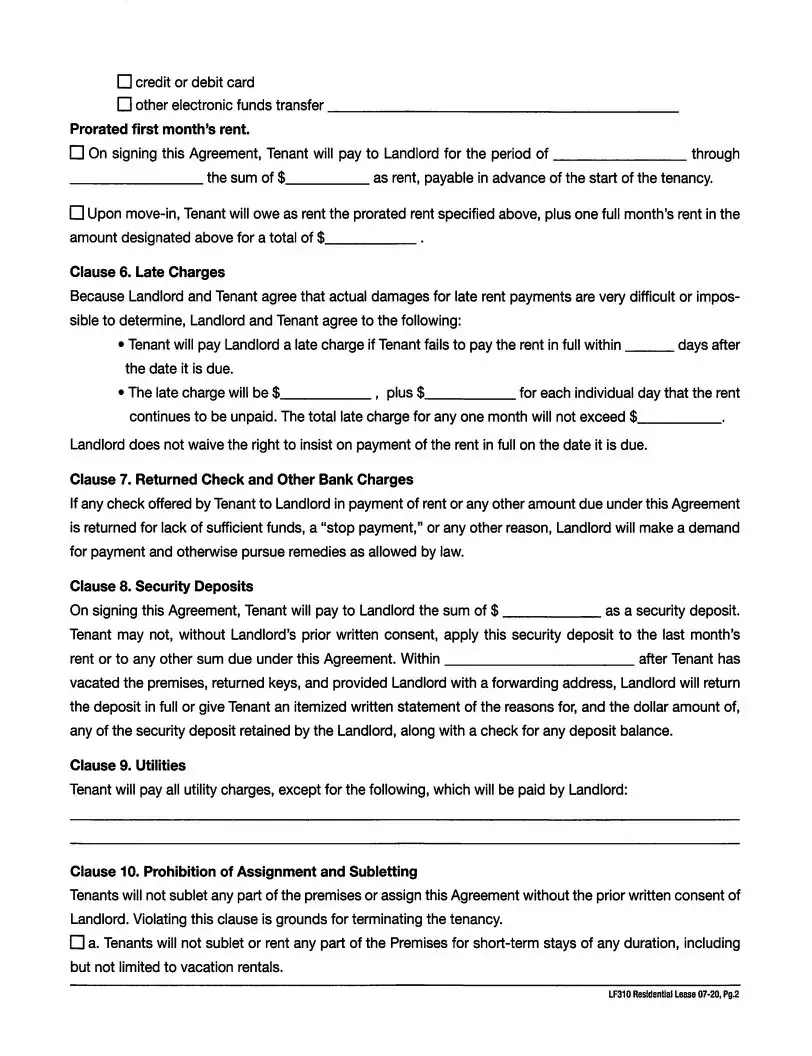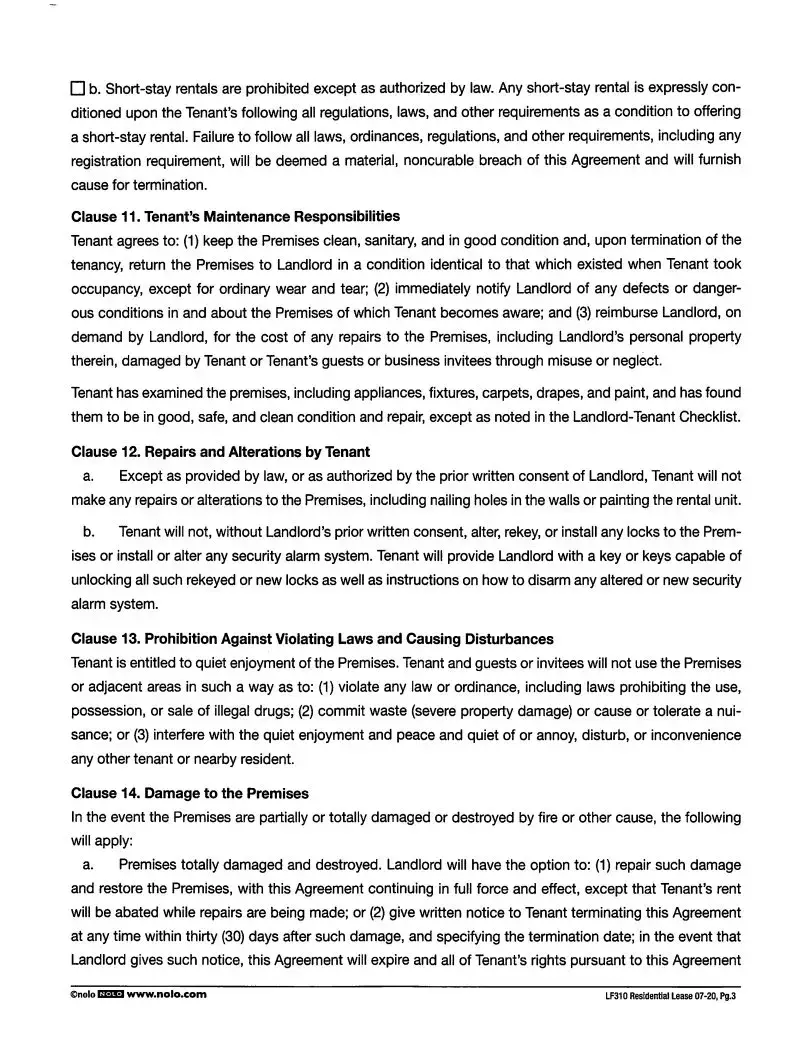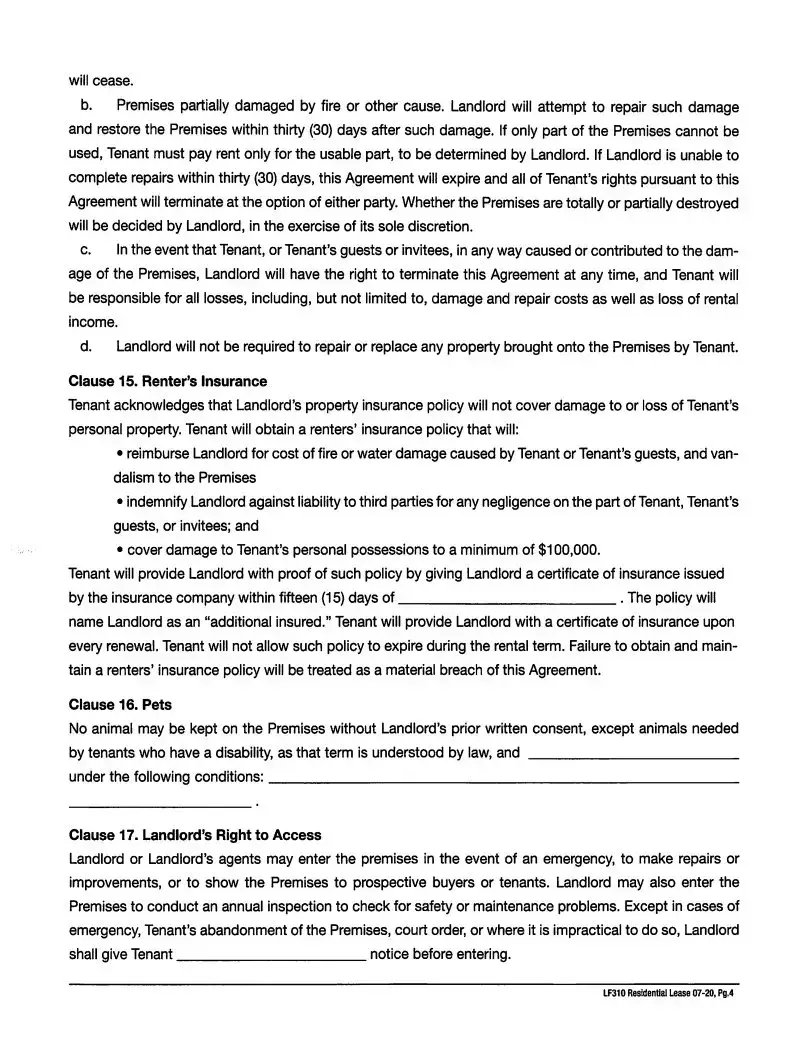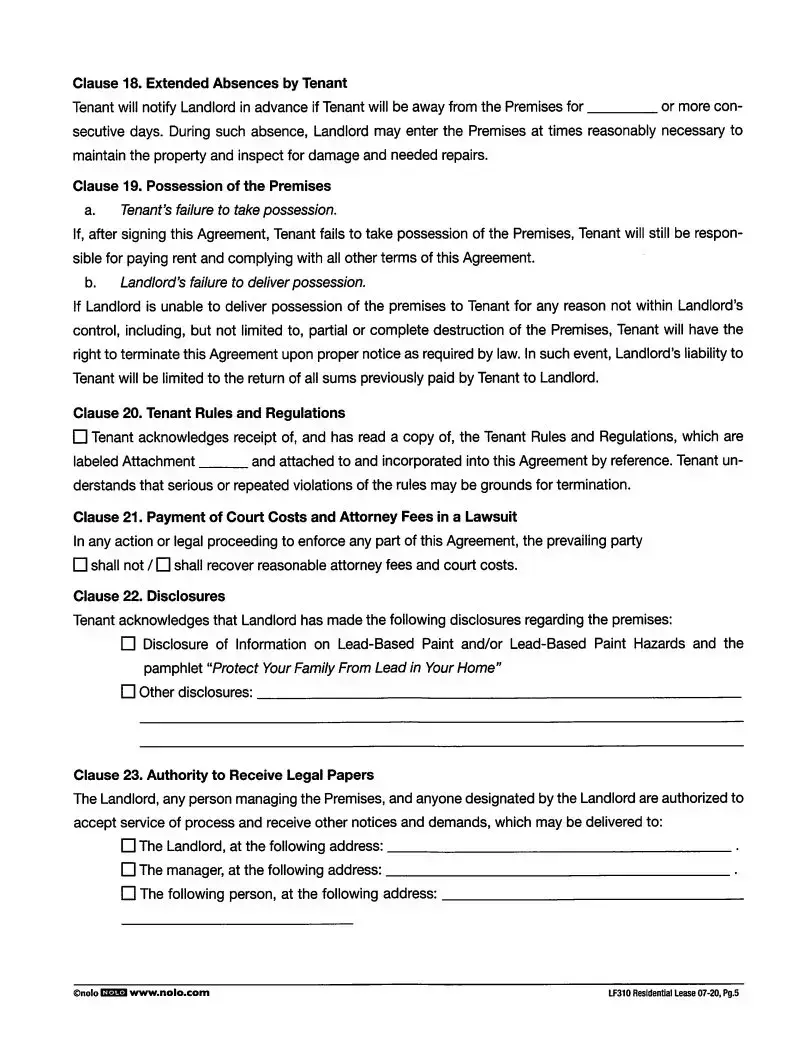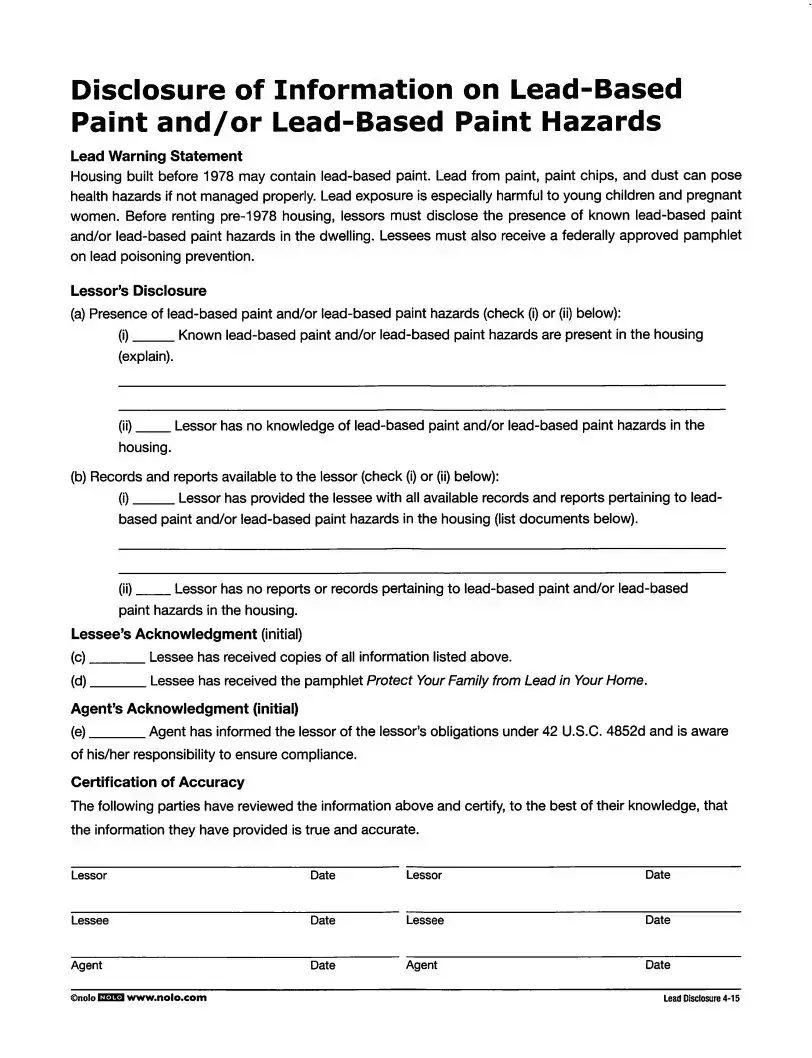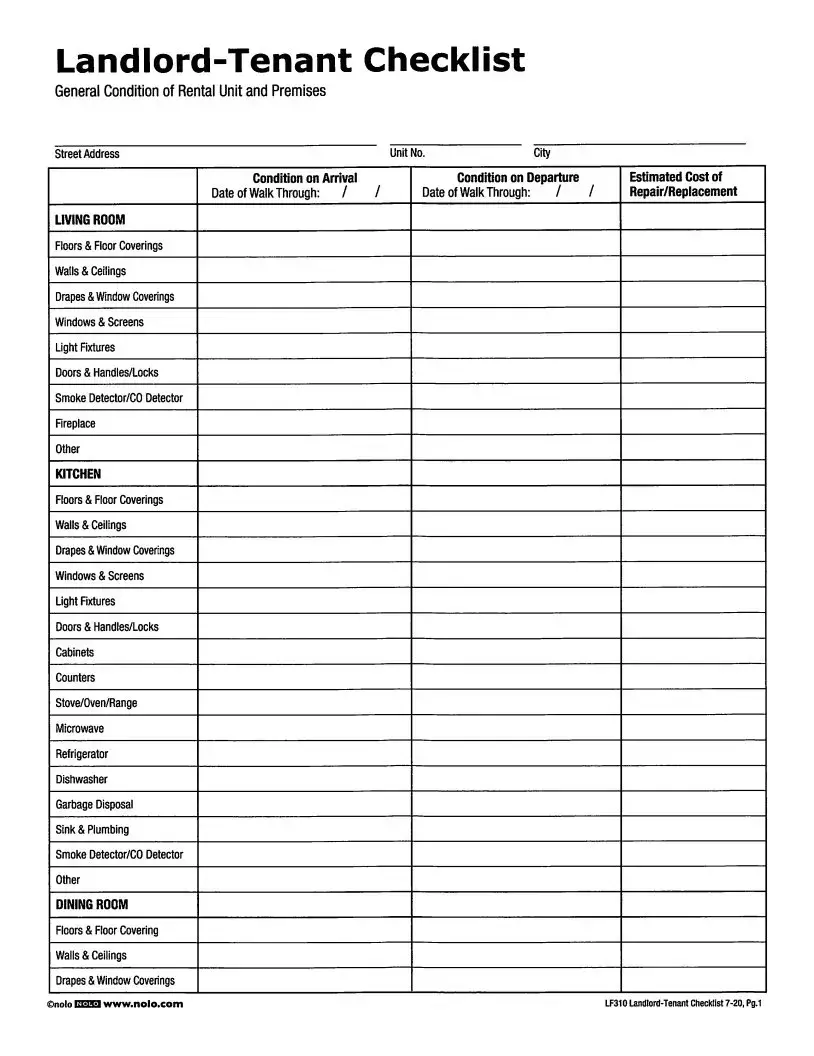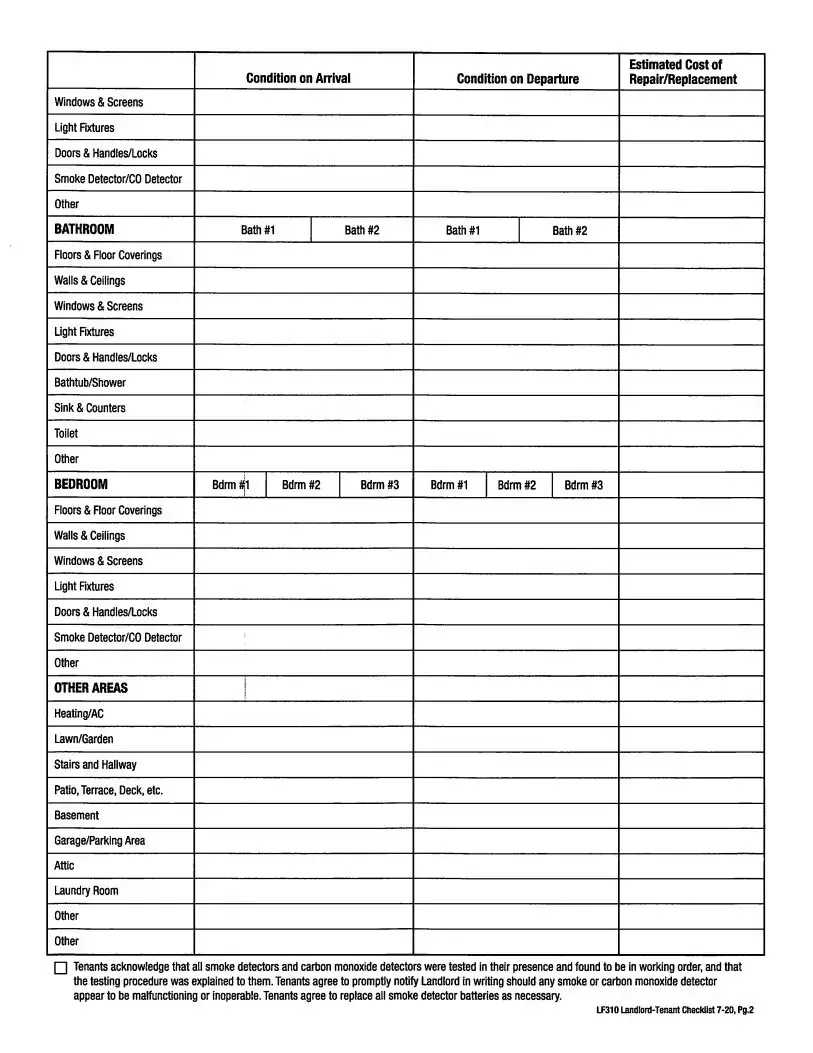What is the Lf310 Residential Lease form?
The Lf310 Residential Lease form is a legal document that outlines the terms and conditions between a landlord and a tenant for renting a residential property. It serves as a binding agreement that details the responsibilities of both parties, including payment of rent, use of the premises, and other important provisions related to the tenancy.
Who are the parties involved in this lease?
The lease identifies two main parties: the landlord and the tenant. Each tenant is responsible for fulfilling the terms of the lease, which means that if one tenant fails to pay rent, all tenants can be held accountable. This joint responsibility helps ensure that the landlord receives payment and that all tenants adhere to the lease terms.
What are the limits on use and occupancy of the premises?
The lease specifies that the rented premises can only be used as a private residence by the tenants listed in the agreement and their minor children. Guests are allowed, but if they stay longer than permitted without written consent from the landlord, it can be considered a violation of the lease. This clause helps maintain the integrity of the rental property and ensures it is used for its intended purpose.
How is rent payment structured in the lease?
The lease outlines that rent is due monthly, in advance, on the first day of each month. If the first falls on a weekend or holiday, payment is expected on the next business day. Tenants can pay rent through various methods, including by mail, in person, or electronically. The specific amount and payment method will be detailed in the lease, ensuring clarity for both parties.
What happens if rent is paid late?
If rent is not paid in full within a specified number of days after the due date, a late charge will be applied. This charge includes a flat fee plus an additional daily fee for each day the payment is overdue. The total late charge for any month will not exceed a certain amount, as outlined in the lease. This provision encourages timely payment and helps the landlord manage cash flow.
What is the purpose of the security deposit?
The security deposit is a sum paid by the tenant at the beginning of the lease to cover potential damages or unpaid rent. The lease specifies that this deposit cannot be used as the last month's rent without the landlord's written consent. After the tenant vacates the premises, the landlord must return the deposit within a certain timeframe, either in full or with an itemized statement detailing any deductions made for damages or unpaid charges.
Can tenants sublet the premises?
Subletting is generally prohibited unless the landlord provides prior written consent. This means tenants cannot rent out any part of the premises or allow others to stay for short-term rentals without approval. Violating this clause can lead to termination of the lease. This rule helps protect the landlord's property and ensures that the terms of the lease are upheld.

